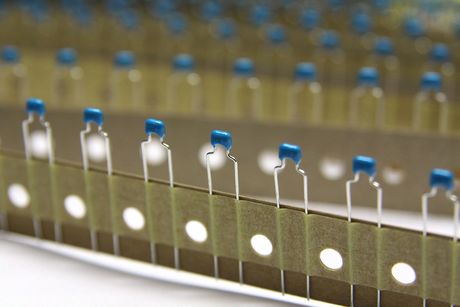Using perovskites to make ceramic capacitors safer

Scientists from Hokkaido University and electronic components manufacturer TDK Corporation are using perovskites to make ceramic capacitors safer.
Ceramic capacitors — used in a variety of electronics, from computers and mobile phones to telecommunications transmitter stations and high-voltage laser power supplies — act like batteries. Their dielectric properties allow them to store electricity and then release it.
Lead zirconate titanate is one of the most widely used ceramics in capacitors but it is hazardous to the health and the environment once it’s disposed of. Scientists are trying to find other less hazardous ceramic materials for use in capacitors. Perovskite oxynitrides — cheap and easily fabricated materials with a distinctive crystalline structure — are particularly promising. But ceramics manufactured from these materials need to be made denser to improve their insulating properties.
This is usually done by applying intense heat; a process called sintering. However, sintering the material can lead to a change in its chemical composition, turning it from an insulator to an electrical conductor. The researchers sintered the perovskite powder SrTaO2N at a temperature of 1450°C for three hours. They then ‘annealed’ the material by heating it with flowing ammonia at 950°C for 12 hours and then allowing it to slowly cool.
They found that the surface of the material after this process (but not its interior) displayed an important dielectric property called ‘ferroelectricity’. This was the first time that a ferroelectric response had been observed on oxynitride perovskite ceramics, they said, making it promising as a new dielectric material for multilayered ceramic capacitors.
3D semiconductor chip alignment boosts performance
Researchers have developed an ultra-precise method to align 3D semiconductor chips using lasers...
Researchers achieve 8 W output from optical parametric oscillator
Researchers have demonstrated a total output power of 8 W from a high-power mid-infrared cadmium...
"Dualtronic" chip for integrated electronics and photonics
Cornell researchers have developed a dual-sided chip known as a "dualtronic" chip that...






